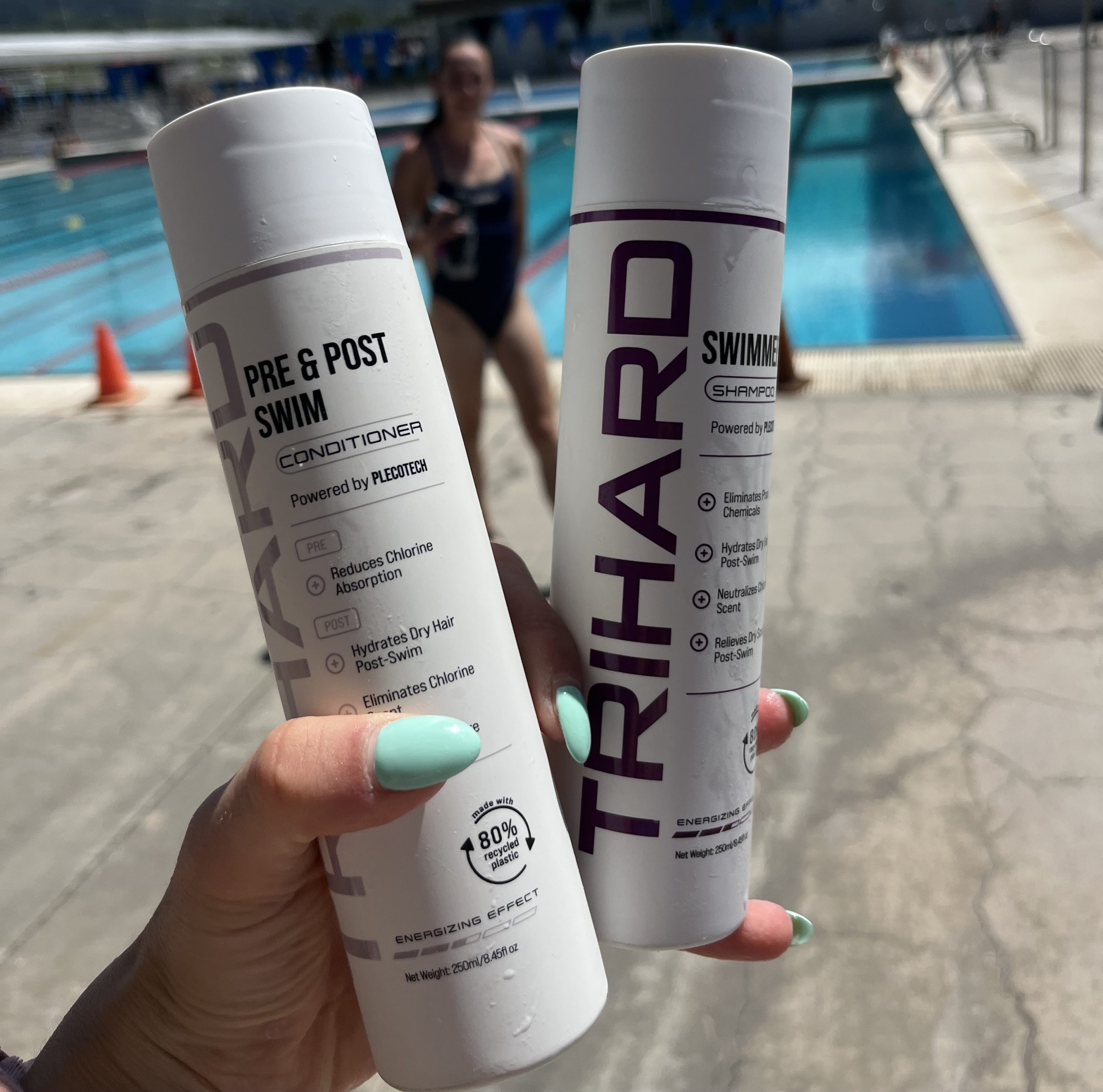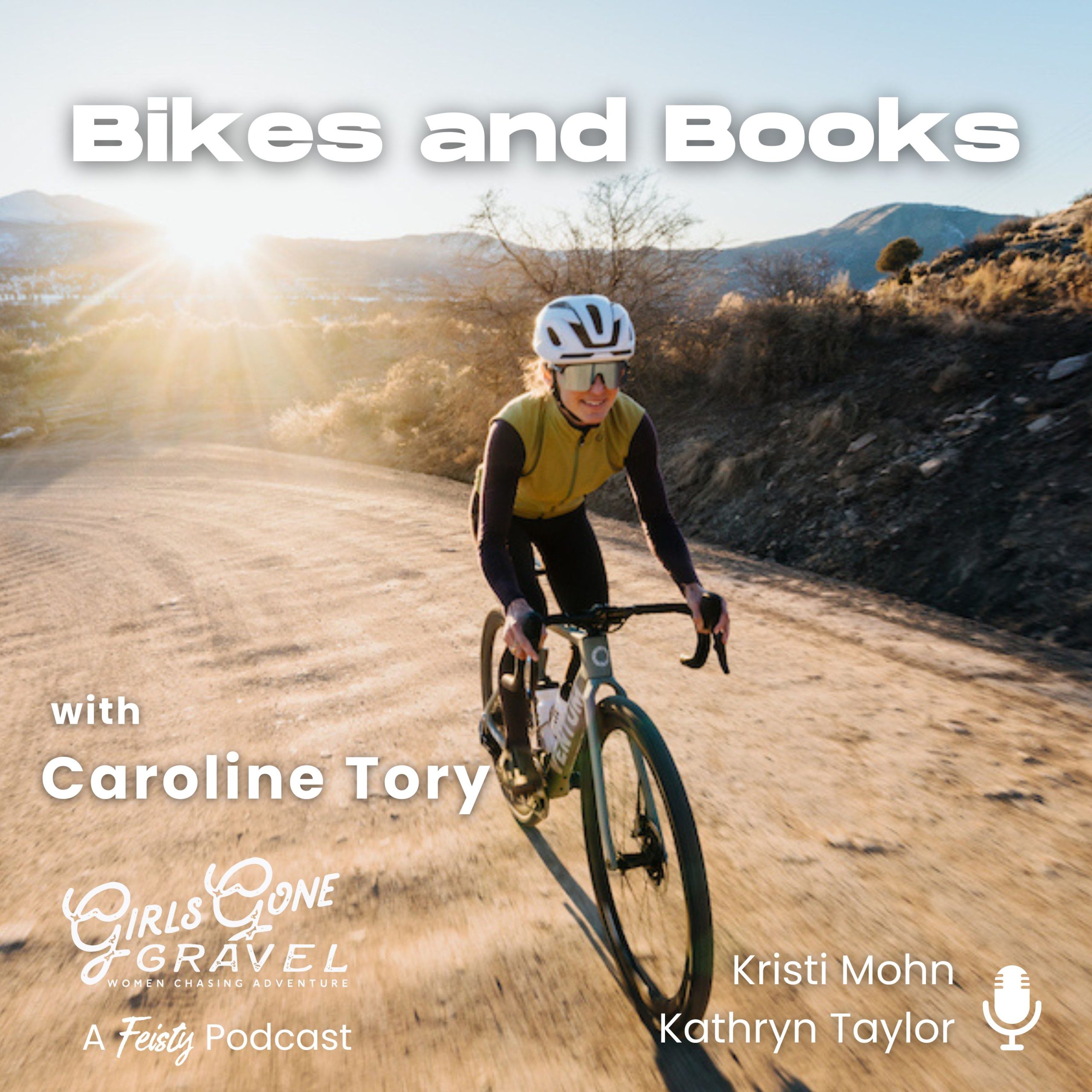April 17, 2018
The Magic of Ultraman
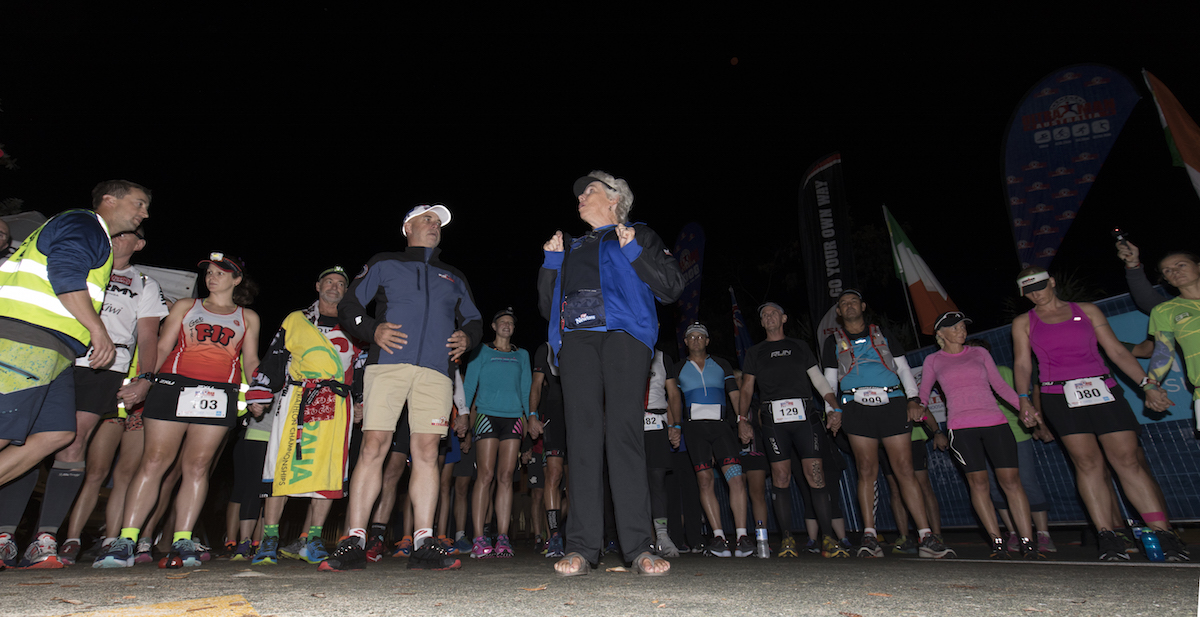
With a little help from our friends, the impossible becomes possible.
By Danielle Audino
40 Athletes. 320 Miles. 3 Days. The Ultraman triathlon race is often regarded as the ultimate test of human endurance. Years of training, thousands of miles, and hundreds of hours are just the tip of the iceberg of what it takes to complete this event. While the sport of triathlon is often a solitary pursuit with the vast majority of training involving solo miles on the bike, trails, and in the pool, completing a race like this takes far more than an individual effort.
The first Ultraman race was held in 1983 and organized by Curtis Tyler, Conrad Smith, and Tyler Will. Tyler served as the original race director and wanted to create more than just a competition, but an event that honored the guiding principles of Hawaiian culture- Aloha (love), Ohana (family), and Kokua (help). The race is divided into three stages over three days. The first day consists of a 6.2 mile swim and a 90 mile bike. Stage two is a 171.4 mile bike ride, and the race finishes off with a 52.4 mile double-marathon run on day three. Each stage must be completed in under 12 hours or the athlete faces disqualification. Each race is limited to 40 athletes on an invitation-only basis and each athlete must have an individual support team of at least two members.
Originating on the Big Island of Hawaii, Ultraman now holds races in Florida and Noosa, Australia. There is also a race of the same distance held in Penticton BC – The Ultra520k. Florida and Noosa act as qualifiers for the Ultraman World Championship held on the original course in Kona, Hawaii. While still somewhat of a niche in the triathlon community, the Ultraman race attracts hundreds of applicants each year from athletes who aspire to take on this ultimate test of human endurance.
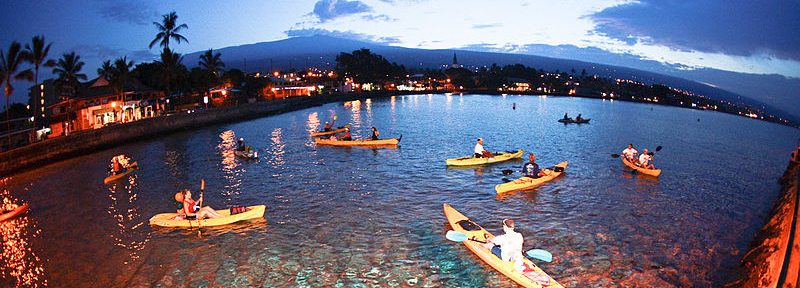
Most importantly, I witnessed the supportive community that is Ultraman and that embodies the true spirit of Aloha, Ohana, and Kokua.
Long course triathlon can often seem like a solo pursuit. It is the individual that completes the training. It is the individual that lines up at the starting line. It is the individual that endures the mental, emotional, and physical challenges of racing for hours on end. At first I thought Ultraman was no different. But, after witnessing Ultraman Australia this past year, I realized I could not be more wrong.
I feel fortunate to have been able to observe this spectacular event in Noosa and was truly inspired by what I saw. At the end of the three day race, I felt I had just witnessed something incredible. I witnessed athletes pushing themselves mentally, physically, and emotionally in a capacity that is almost unfathomable. I witnessed complete acts of selflessness by the volunteers, spectators, and crew members that helped these athletes reach the finish line.
Most importantly, I witnessed the supportive community that is Ultraman and that embodies the true spirit of Aloha, Ohana, and Kokua. I realized that even though forty individuals line up at the start line, it is really the hundreds of spectators, volunteers, and support crew members that get these athletes to the finish line. In order to complete such a daunting task, each athlete must heavily rely on their crew members to get them across the finish line. Sure, no one can physically travel the 320 miles for them, but that does not mean that they are traveling those 320 miles alone.

One of the most blatant examples of the Ohana, Kokua, and Aloha culture that is deeply ingrained in Ultraman, is the individual support crews that help each athlete throughout the entire race. For this three day event, the athlete is completely dependent on their crew. Whether it is organizing and planning every calorie consumed, maintaining all the equipment and gear needed, or physically pacing and guiding the athlete throughout the course, the crew is paramount in getting the athlete to the finish line. Mary Knott, Ultraman Australia 2017 finisher and Kona qualifier explains it best when she says,
“I was never alone. Even though I’m the one pedaling 170 miles, my crew was with me every step of the way. Seeing them, and interacting with them, even if it was just to exchange bottles and fuel, was such a need boost to my spirit. Unlike Ironman, where you can be surrounded by 2000 people but feel completely alone because it’s every man for himself/ herself. Ultraman really is a team event.”
In this community, the group is far stronger than the individual.
And Ultraman crews do not just look out for their own athlete, they also provide support and encouragement for any racer who may need it during the race. This is no better evident than in an experience Mary Knott had during her race in 2017. She suffered a lacerated tire on a short out and back section during Day two. Her crew was not in sight, but another crew happened to be across the street and lent her a spare wheel without second thought.
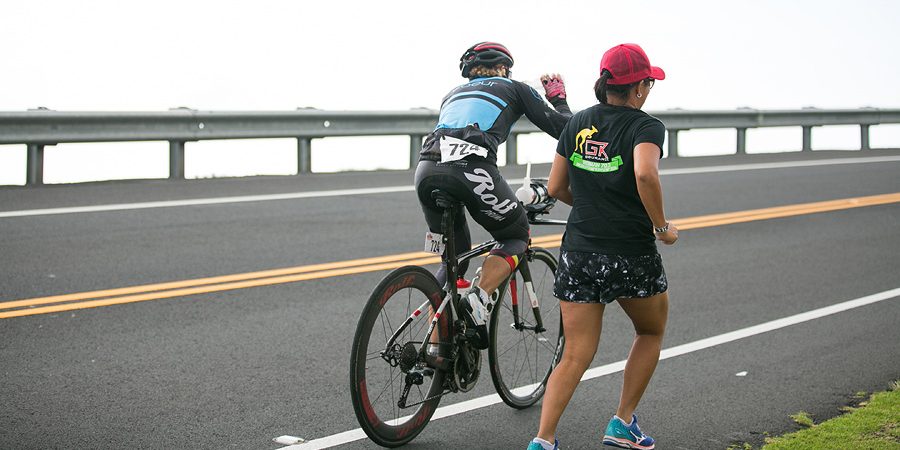
Photo: Janine Kaye
Examples of generosity like this happen all the time in the Ultraman community. Both Dee Fuller and Kate Bevilaqua, had a similar experiences during their Ultraman races. About halfway through the double marathon on Day 3, Dee ran out of fuel and her crew was having a hard time finding her to hand off some much needed nutrition. Without a second thought, another athlete’s crew happily gave her some gels, water, and calories to help her along.
For Kate, it was actually her crew that provided help to a struggling athlete. During Day 3 of her race, one of the other athletes became very ill. Kate had a doctor in her crew and without hesitation, her crew stayed behind to help this struggling athlete. With the selfless help of a competitor’s crew, this athlete was able to finish his race that day.
Whether it is providing needed assistance or a simple word of encouragement, each crew acts as if every single athlete is their own. Mary Knott describes this experience by saying, “I had no less than 6 crews, other than my own, cheering for me by name all day long. It wasn’t always the same crews as we separated out on the road and passed or got passed by others. But the Ultraman Ohana was alive and well on course through the entire event.”
The power of Ultraman is that it transcends sport and serves as an example of what we can achieve when we work together.
After enduring two long days of racing, athletes must complete a double marathon within twelve hours on Day Three. It is on this day, when bodies are exhausted, minds are fighting to believe, and inner resolve is questioned, that the Ultraman family fully comes alive to bring these athletes home.
Wanting to witness the beginning of Day Three and see these athletes begin the final leg of their journey, I woke up early and made my way to the start line. The energy was palpable and I could feel the anticipation, nerves, excitement, and a little bit of dread hanging in the air. Before the day began, the race director called all of the athletes together to form a circle. Linked arm in arm, these athletes of different ages and backgrounds came together to share a blessing. It was incredibly powerful to witness such a strong bond between all involved. Throughout the next 52 miles, that bond continued to strengthen.
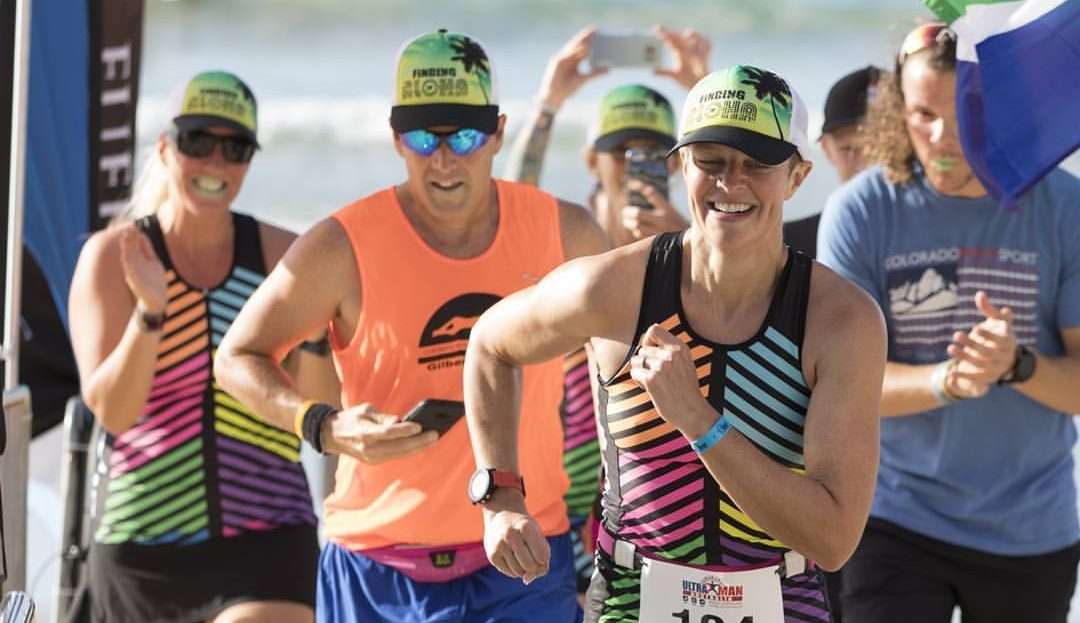
Mary Knott crossing finish line with her crew | Photo: Eyes Wide Open Images
It is almost impossible to put into words what each athlete endures in order to make it through the final leg of Ultraman. And having never completed one myself, I cannot comprehend the extent of it either. But I was awed by the incredible displays of support by my fellow spectators, volunteers, and athletes. Whether it was athletes encouraging each other, crews lending needed supplies to other crews, or volunteers cheering for each and every athlete, the selflessness of the Ultraman community was keenly felt.
No demonstration of this kinship was seen stronger than at the Ultraman finish line. The run course spits the athletes out onto Noosa Main Beach, where they run the final mile of their three day journey. For every athlete, the entire crew joined them for these final steps through the sand and they made their way to the finish line as a team. Signifying that while only one member has the race number pinned to their back, the entire team fought hard for that finish line. It was inspiring to witness these celebrations by the athletes and their crew. It quickly became evident, that while not physically racing, the crew members were as mentally and emotionally invested as the athletes in the success of the race. I could feel both the immense sense of gratitude the athlete had for their crew, and the overwhelming love and support the crew had for their athlete.
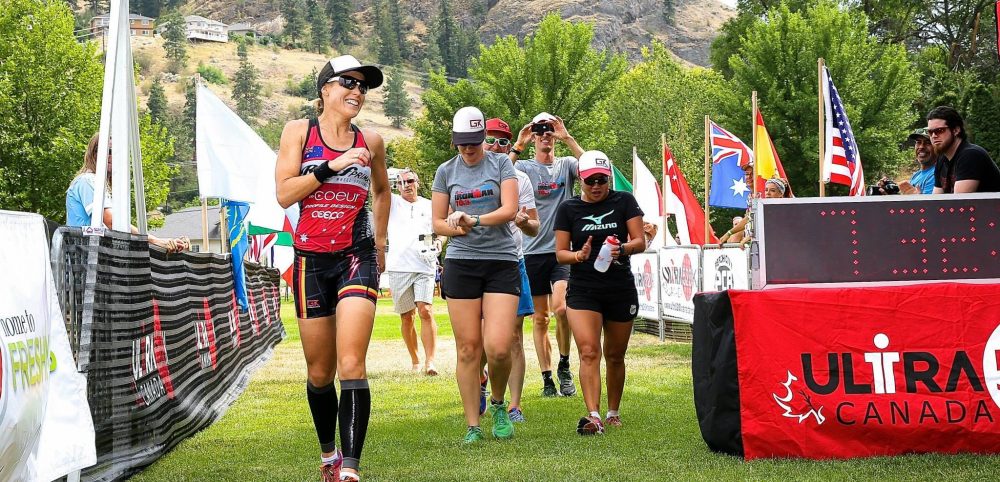
Photo: rick@ultratexas520k.com
The spirit of Ohana, Aloha, and Kokua did not end with the immediate racing crews, but was alive throughout the entire community of supporters and spectators. Times and rankings were of no significance at Ultraman. Each athlete was celebrated with the same exuberance whether they were the first across the line, or the final athlete sneaking by just before the cutoff. Dee Fuller describes it best when she says, “Coming home across the golden sands was like the rush of a drug entering your veins, all engrossing, all energy, nothing but smiles. As my tiny team picked up the pace, I was overwhelmed by what we were achieving, and as we crossed the line, the emotions ran free!”
Mary and Dee both show that Ultraman is not just another triathlon race. Its uniqueness comes from the sense of community felt by all who are involved. In this community, pushing outside the comfort zone is a daily occurence. In this community, limits do not apply. And in this community, the group is far stronger than the individual. This is so much bigger than just a race to the finish line. The power of Ultraman is that it transcends sport and serves as an example of what we can achieve when we work together. Looking at the numbers and the sheer magnitude of this endeavor, the race might seem impossible at first. And maybe it is as an individual. But with the support of an entire community behind you and of racers past and present, the impossible becomes possible.


 Outspoken Women in Triathlon Summit Returns Bigger than Ever
Outspoken Women in Triathlon Summit Returns Bigger than Ever  Driving the Lamborghini: Productivity and the Power of Paper
Driving the Lamborghini: Productivity and the Power of Paper  5 take aways from the Compete Sports Diversity Summit
5 take aways from the Compete Sports Diversity Summit  Simple Tips to Hone Your Bike Handling Skills
Simple Tips to Hone Your Bike Handling Skills 